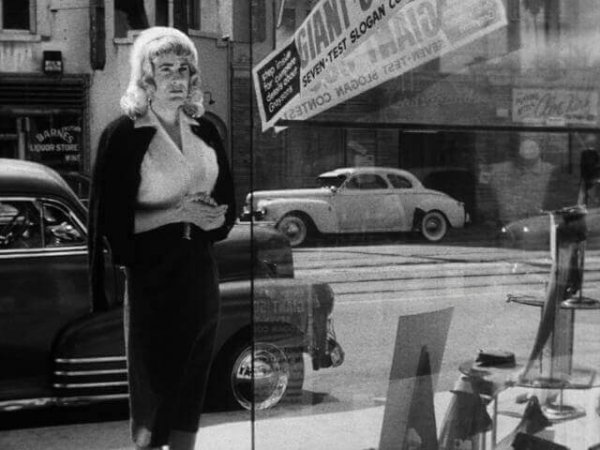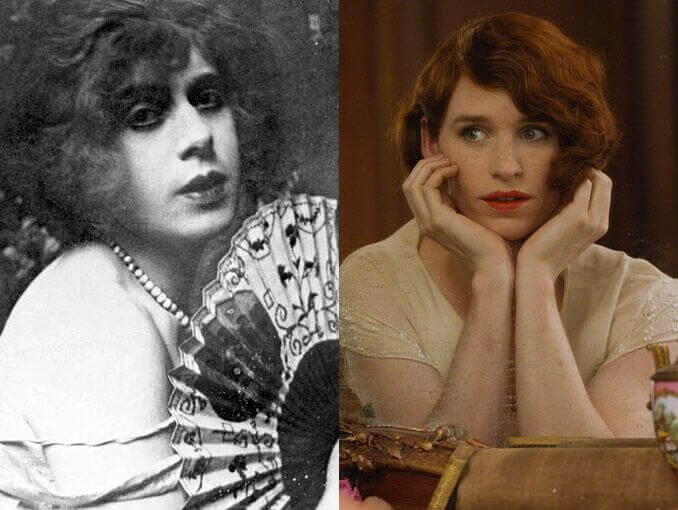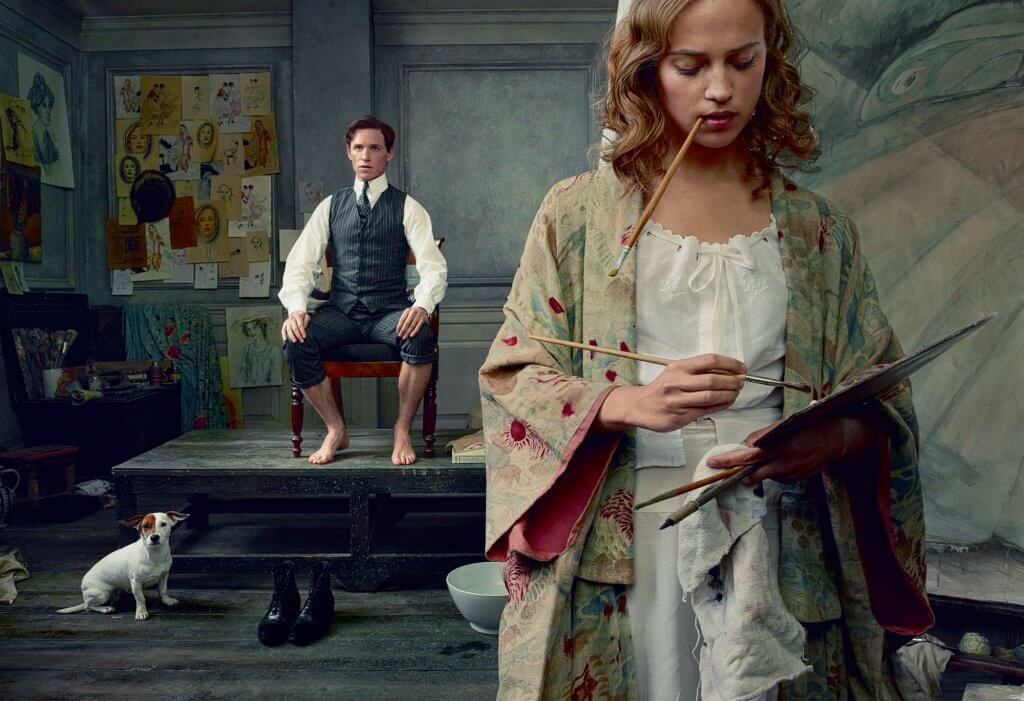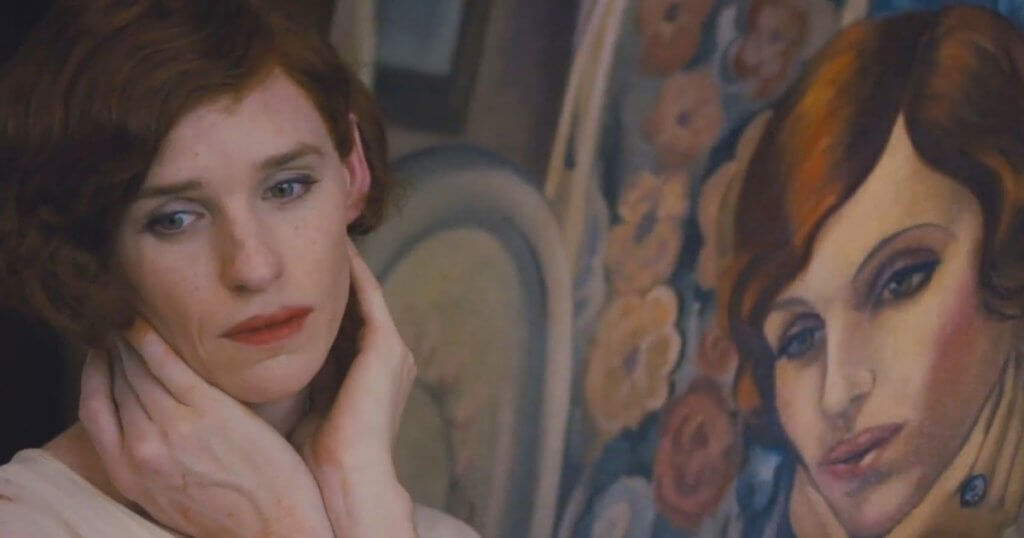Transsexuality in Cinema: From Glen or Glenda to The Danish Girl

Transsexuality is a controversial and taboo subject that remained in the shadows for too long. Its normalization is proving a very slow and hard path for transsexual people. It seems that there are fewer and fewer prejudices towards homosexuals. Now, more people understand that love is beyond physical. Many countries even allow same-sex marriage today.
However, the demands and manifestations for a love without barriers are still very necessary. Prejudice still exists and we hear news of harassment or aggression towards homosexual or bisexual people. But what about transgender people? There’s a deeply-rooted stigma in society. Being transsexual isn’t easy for anyone because, even in environments where there’s a homosexual majority, the stigma usually survives in some way.
“To love oneself is the beginning of a lifelong romance.”
-Oscar Wilde-
It’s difficult to believe that there are still cases of families who have to move because one of their members is transsexual. That there are still people who can’t get certain jobs because of it. It’s even more horrifying when families don’t accept their son or daughter as they are.
And the truth is that transsexuals have minimal visibility in the media. The only coverage is about aggression and harassment or, in the case of cinema, parodies.
In movies and TV, most transsexual characters have secondary roles. They tend to be shown as prostitutes or in comical situations. It’s common to find humorous scenes in which a man sleeps with a woman and she, in the end, turns out to be transsexual.
Glen or Glenda and the first steps towards visibility
In the year 1952, Christine Jorgensen stole the covers of American media for being the first person to have undergone successful sex reassignment surgery. This inspired the film Glen or Glenda. Ed Wood, who’s known for being the worst film director of all time, directed it. Currently, Ed Wood is considered a cult filmmaker, and his films, which are low budget, have been rescued and studied. Even Tim Burton made a film about him.
“Everyone is both sexes in varying degrees. I am more of a woman than a man.”
-Christine Jorgensen-
Glen or Glenda, starring Wood himself, is a film worthy of Wood. It has innumerable errors and “copy-paste” scenes from archive footage. In short, it’s a film “by the worst director of all time”, but had a revolutionary plot for its time.

In Glen or Glenda, Wood talks about transvestism. He presents a heterosexual character who likes to cross-dress, just as the director himself does. There’s also a hermaphrodite character who undergoes sex reassignment surgery.
It shows the difference between transvestism and transsexuality and shows that a heterosexual can also be a transvestite. The problem is that it was released in 1953, where transsexuality and transvestism were considered diseases. Wood reflects this in his film. Decades later, you can see other examples in movies such as Todo sobre mi madre (All about my mother), Dallas Buyers Club… or musicals like The Rocky Horror Picture Show or The Adventures of Priscilla, Queen of the Desert.
Trying to get out of the box: The Danish Girl
The Danish Girl brings us closer to a real character, Lili Elbe. However, as in any adaptation, the story has variations. Lili Elbe was the first person to undergo sex reassignment surgery. Before her change, Lili was called Einar. She was a painter and had married another painter, Gerda Wegener.
Lili faced innumerable obstacles. This happened during the 1920s and 30s, and cases like his were still treated as mental illnesses and electroshock therapy was even applied. However, he got a German doctor to perform various surgeries, including an ovarian transplant. At the time, it was an experimental surgery.

In The Danish Girl, we witness this transition. Eddie Redmayne plays Lili/Einar and Alicia Vikander plays Gerda. The film is exceptionally made and transports us to that time period. The photography creates an almost poetic atmosphere.
Many critics think that it’s softened the issue too much or that it’s too dramatic. But the truth is that The Danish Girl is a necessary film. Redmayne and Vikander’s interpretations conquer us and show us another perspective of transsexuality, one that’s more natural and intimate.
Everything begins as a game: Einar will pose as a woman for Gerda’s painting, replacing the original model. At first, both think it’s fun, but it awakens certain feelings in Einar, who begins to feel that Lili was always there, hidden behind his masculine appearance. Gerda’s painting of Einar as Lili is quite successful.

During his childhood, Einar experienced a homosexual experience, but he hid it. Lili lived locked inside Einar’s body. Lili identifies with the portraits Gerda paints, she sees her reflection in them. But when she looks in the mirror, this all fades away completely.
The philosopher and psychoanalyst Jacques Lacan tells us about the mirror stage, a phase in which the subject recognizes themself before the mirror, the moment in which the recognition of the “self” is formed. When we’re babies, we see our fragmented body: an arm, a leg, a hand… The moment we recognize ourselves is when we see the whole body. Lili seeks to recognize herself, but she doesn’t succeed in the mirror. The paintings are the closest thing to self-recognition.
There’s a scene in which Einar/Lili appears naked, still as a man, looks in the mirror and doesn’t recognize herself. It’s one of the most dramatic moments of the film. Lili hides her member between her legs because she feels that it doesn’t belong to her, because it’s a symbol of masculinity and she isn’t a man, she’s a woman.

Something similar happens when he enters a brothel, where, through peepholes, men observe a naked prostitute. Lili imitates her gestures as if she saw herself in that woman, because that is the body that should belong to her.
In addition to transsexuality, The Danish Girl also addresses the theme of love. We see how Gerda accepts Lili. At first, she finds it difficult to understand what’s happening to her husband, it’s hard for her to assimilate that Einar has died, that he no longer exists. However, her love is greater than any prejudice and she stayed by Lili’s side until the end. Even if their love is different and is no longer “romantic love”, her love doesn’t go away. In this sense, cinema does a favor to humanity, and to us as spectators, when it reflects these kinds of stories.
“Last night I had the most beautiful dream. I dreamed that I was a baby in my mother’s arms. And she looked down at me, and she called me Lili.”
-The Danish Girl-
Transsexuality is a controversial and taboo subject that remained in the shadows for too long. Its normalization is proving a very slow and hard path for transsexual people. It seems that there are fewer and fewer prejudices towards homosexuals. Now, more people understand that love is beyond physical. Many countries even allow same-sex marriage today.
However, the demands and manifestations for a love without barriers are still very necessary. Prejudice still exists and we hear news of harassment or aggression towards homosexual or bisexual people. But what about transgender people? There’s a deeply-rooted stigma in society. Being transsexual isn’t easy for anyone because, even in environments where there’s a homosexual majority, the stigma usually survives in some way.
“To love oneself is the beginning of a lifelong romance.”
-Oscar Wilde-
It’s difficult to believe that there are still cases of families who have to move because one of their members is transsexual. That there are still people who can’t get certain jobs because of it. It’s even more horrifying when families don’t accept their son or daughter as they are.
And the truth is that transsexuals have minimal visibility in the media. The only coverage is about aggression and harassment or, in the case of cinema, parodies.
In movies and TV, most transsexual characters have secondary roles. They tend to be shown as prostitutes or in comical situations. It’s common to find humorous scenes in which a man sleeps with a woman and she, in the end, turns out to be transsexual.
Glen or Glenda and the first steps towards visibility
In the year 1952, Christine Jorgensen stole the covers of American media for being the first person to have undergone successful sex reassignment surgery. This inspired the film Glen or Glenda. Ed Wood, who’s known for being the worst film director of all time, directed it. Currently, Ed Wood is considered a cult filmmaker, and his films, which are low budget, have been rescued and studied. Even Tim Burton made a film about him.
“Everyone is both sexes in varying degrees. I am more of a woman than a man.”
-Christine Jorgensen-
Glen or Glenda, starring Wood himself, is a film worthy of Wood. It has innumerable errors and “copy-paste” scenes from archive footage. In short, it’s a film “by the worst director of all time”, but had a revolutionary plot for its time.

In Glen or Glenda, Wood talks about transvestism. He presents a heterosexual character who likes to cross-dress, just as the director himself does. There’s also a hermaphrodite character who undergoes sex reassignment surgery.
It shows the difference between transvestism and transsexuality and shows that a heterosexual can also be a transvestite. The problem is that it was released in 1953, where transsexuality and transvestism were considered diseases. Wood reflects this in his film. Decades later, you can see other examples in movies such as Todo sobre mi madre (All about my mother), Dallas Buyers Club… or musicals like The Rocky Horror Picture Show or The Adventures of Priscilla, Queen of the Desert.
Trying to get out of the box: The Danish Girl
The Danish Girl brings us closer to a real character, Lili Elbe. However, as in any adaptation, the story has variations. Lili Elbe was the first person to undergo sex reassignment surgery. Before her change, Lili was called Einar. She was a painter and had married another painter, Gerda Wegener.
Lili faced innumerable obstacles. This happened during the 1920s and 30s, and cases like his were still treated as mental illnesses and electroshock therapy was even applied. However, he got a German doctor to perform various surgeries, including an ovarian transplant. At the time, it was an experimental surgery.

In The Danish Girl, we witness this transition. Eddie Redmayne plays Lili/Einar and Alicia Vikander plays Gerda. The film is exceptionally made and transports us to that time period. The photography creates an almost poetic atmosphere.
Many critics think that it’s softened the issue too much or that it’s too dramatic. But the truth is that The Danish Girl is a necessary film. Redmayne and Vikander’s interpretations conquer us and show us another perspective of transsexuality, one that’s more natural and intimate.
Everything begins as a game: Einar will pose as a woman for Gerda’s painting, replacing the original model. At first, both think it’s fun, but it awakens certain feelings in Einar, who begins to feel that Lili was always there, hidden behind his masculine appearance. Gerda’s painting of Einar as Lili is quite successful.

During his childhood, Einar experienced a homosexual experience, but he hid it. Lili lived locked inside Einar’s body. Lili identifies with the portraits Gerda paints, she sees her reflection in them. But when she looks in the mirror, this all fades away completely.
The philosopher and psychoanalyst Jacques Lacan tells us about the mirror stage, a phase in which the subject recognizes themself before the mirror, the moment in which the recognition of the “self” is formed. When we’re babies, we see our fragmented body: an arm, a leg, a hand… The moment we recognize ourselves is when we see the whole body. Lili seeks to recognize herself, but she doesn’t succeed in the mirror. The paintings are the closest thing to self-recognition.
There’s a scene in which Einar/Lili appears naked, still as a man, looks in the mirror and doesn’t recognize herself. It’s one of the most dramatic moments of the film. Lili hides her member between her legs because she feels that it doesn’t belong to her, because it’s a symbol of masculinity and she isn’t a man, she’s a woman.

Something similar happens when he enters a brothel, where, through peepholes, men observe a naked prostitute. Lili imitates her gestures as if she saw herself in that woman, because that is the body that should belong to her.
In addition to transsexuality, The Danish Girl also addresses the theme of love. We see how Gerda accepts Lili. At first, she finds it difficult to understand what’s happening to her husband, it’s hard for her to assimilate that Einar has died, that he no longer exists. However, her love is greater than any prejudice and she stayed by Lili’s side until the end. Even if their love is different and is no longer “romantic love”, her love doesn’t go away. In this sense, cinema does a favor to humanity, and to us as spectators, when it reflects these kinds of stories.
“Last night I had the most beautiful dream. I dreamed that I was a baby in my mother’s arms. And she looked down at me, and she called me Lili.”
-The Danish Girl-
This text is provided for informational purposes only and does not replace consultation with a professional. If in doubt, consult your specialist.







